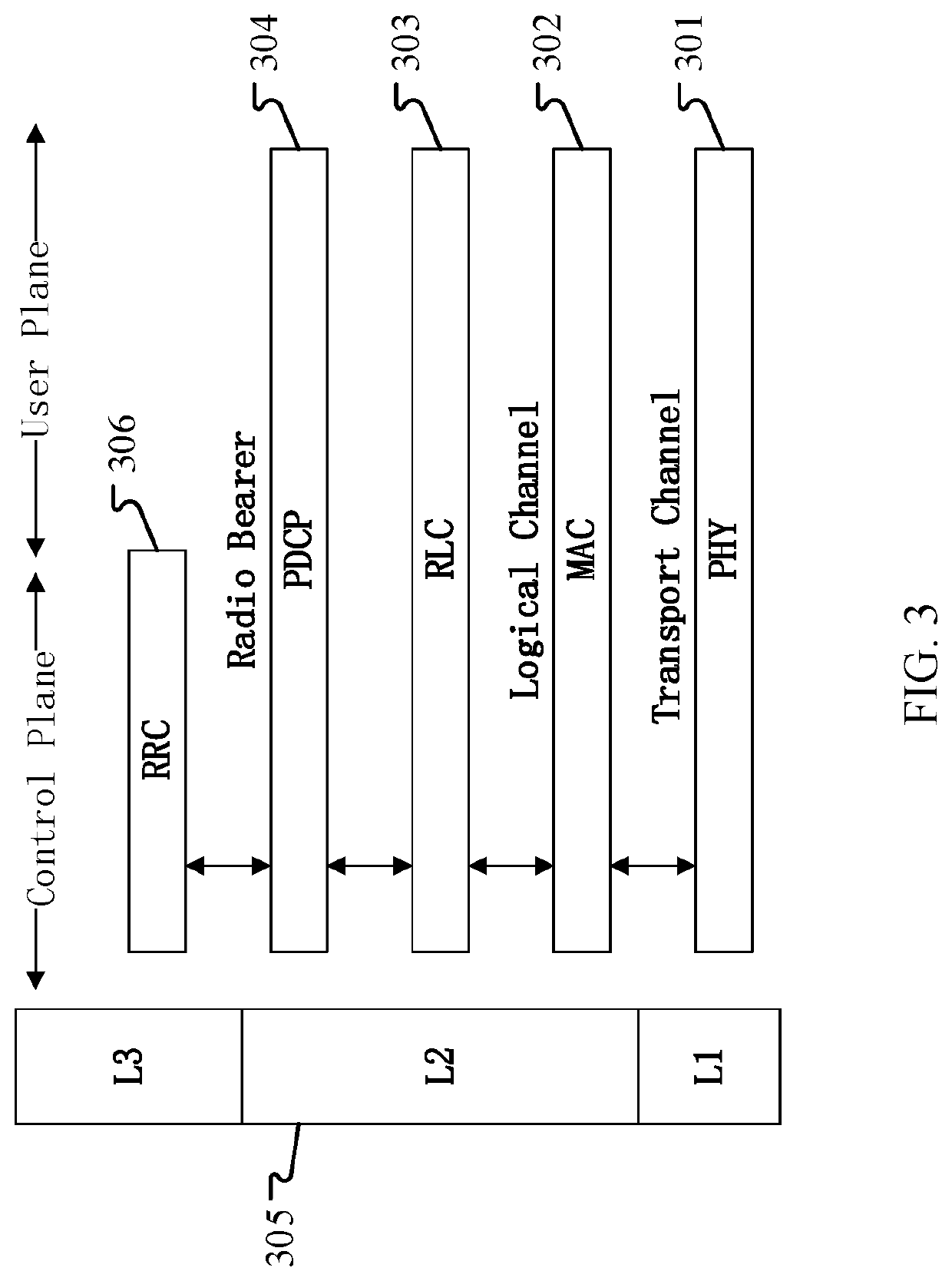Method and device in ue and base station for wireless communication
a wireless communication and wireless communication technology, applied in the direction of wireless communication, electrical equipment, etc., can solve the problem of not being able to apply mass mimo scenarios, achieve the effect of improving the peak rate of ue, avoiding configuring k transmission modes, and improving transmission efficiency
- Summary
- Abstract
- Description
- Claims
- Application Information
AI Technical Summary
Benefits of technology
Problems solved by technology
Method used
Image
Examples
embodiment 1
[0191]Embodiment 1 illustrates an example of a flowchart of transmitting K pieces of first-type information, as shown in FIG. 1.
[0192]In Embodiment 1, a UE transmits a first radio signal through an air interface, the first radio signal includes K pieces of first-type information, and the K is a positive integer greater than 1. Herein, the K pieces of first-type information indicate multi-antenna related capabilities of the UE under K transmission configurations respectively; the K transmission configurations all correspond to a first frequency band combination, and the first frequency band combination includes one or more frequency bands; numbers of parallel frequency subbands corresponding to the K transmission configurations belong to K first-type integer sets respectively, any one of the K first-type integer sets is composed of one or more positive integers, and any two of the K first-type integer sets are different.
[0193]In one embodiment, the first radio signal is an output of ...
embodiment 2
[0217]Embodiment 2 illustrates an example of a diagram of a network architecture, as shown in FIG. 2.
[0218]FIG. 2 illustrates a network architecture 200 of Long-Term Evolution (LTE), Long-Term Evolution Advanced (LTE-A) and future 5G systems. The LTE network architecture 200 may be called an Evolved Packet System (EPS) 200. The EPS 200 may include one or more UEs 201, an Evolved UMTS Terrestrial Radio Access Network-New Radio (E-UTRAN-NR) 202, a 5G-Core Network / Evolved Packet Core (5G-CN / EPC) 210, a Home Subscriber Server (HSS) 220 and an Internet Service 230. Herein, the UMTS represents Universal Mobile Telecommunication System. The EPS may be interconnected with other access networks. For simple description, the entities / interfaces are not shown. As shown in FIG. 2, the EPS provides packet switching services. Those skilled in the art are easy to understand that various concepts presented throughout the disclosure can be extended to networks providing circuit switching services. Th...
embodiment 3
[0222]Embodiment 3 illustrates a diagram of an embodiment of a radio protocol architecture of a user plane and a control plane according to the disclosure, as shown in FIG. 3.
[0223]FIG. 3 is a diagram illustrating an embodiment of a radio protocol architecture of a user plane and a control plane. In FIG. 3, the radio protocol architecture of a UE and a gNB is represented by three layers, which are a Layer 1, a Layer 2 and a Layer 3 respectively. The Layer 1 (L1 layer) is the lowest layer and implements various PHY (physical layer) signal processing functions. The L1 layer will be referred to herein as the PHY 301. The Layer 2 (L2 layer) 305 is above the PHY 301, and is responsible for the link between the UE and the gNB over the PHY 301. In the user plane, the L2 layer 305 includes a Medium Access Control (MAC) sublayer 302, a Radio Link Control (RLC) sublayer 303, and a Packet Data Convergence Protocol (PDCP) sublayer 304, which are terminated at the gNB on the network side. Althou...
PUM
 Login to View More
Login to View More Abstract
Description
Claims
Application Information
 Login to View More
Login to View More - R&D
- Intellectual Property
- Life Sciences
- Materials
- Tech Scout
- Unparalleled Data Quality
- Higher Quality Content
- 60% Fewer Hallucinations
Browse by: Latest US Patents, China's latest patents, Technical Efficacy Thesaurus, Application Domain, Technology Topic, Popular Technical Reports.
© 2025 PatSnap. All rights reserved.Legal|Privacy policy|Modern Slavery Act Transparency Statement|Sitemap|About US| Contact US: help@patsnap.com



